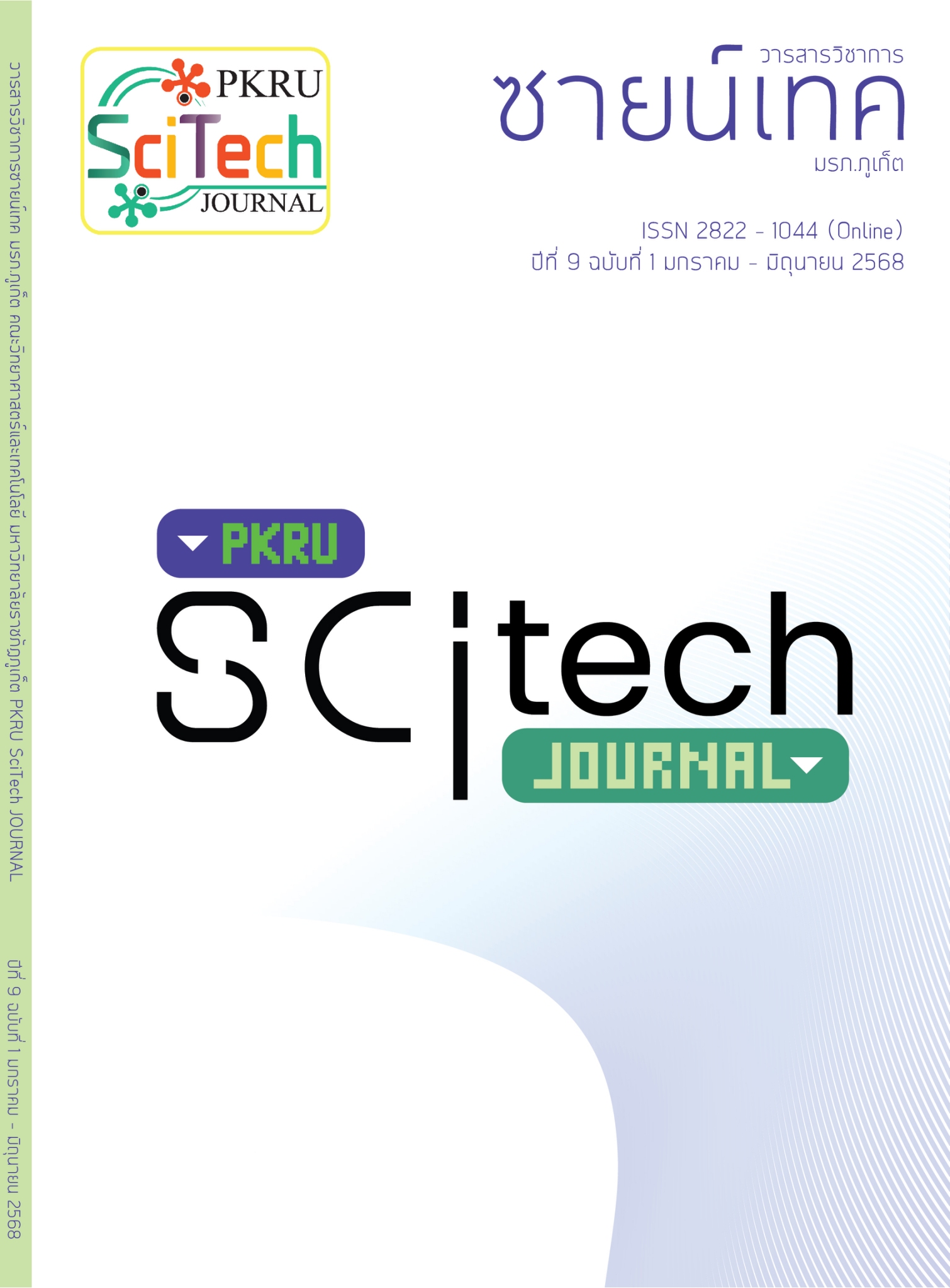แบบจำลองการขยายตัวของเอกภพขนาดเล็ก: บอลลูน
Main Article Content
บทคัดย่อ
งานวิจัยครั้งนี้มีวัตถุประสงค์เพื่อสร้างแบบจำลองการขยายตัวของเอกภพขนาดเล็กและศึกษาลักษณะทางกายภาพของการขยายตัวของเอกภพขนาดเล็ก ตลอดจนศึกษาเปรียบเทียบกับทฤษฎี การขยายตัวของเอกภพด้วยเทคนิคการใช้บอลลูน ที่เป็นวัสดุที่หาง่าย มีราคาถูกสะดวกสำหรับการทดลอง ผลการวิจัยพบว่าข้อมูลที่ได้จากการทดลองสอดคล้องกับผลทางทฤษฎี โดยความเร็วในการเคลื่อนที่ออกห่างและความยาวส่วนโค้งแสดงความสัมพันธ์ในลักษณะเส้นตรงที่สอดคล้องกับสมการ การเปลี่ยนแปลงค่าคงที่ฮับเบิลในแต่ละช่วงเวลาเป็นไปตามสมการ
การเปลี่ยนแปลงความยาวส่วนโค้งระหว่างจุด 2 จุดกับเวลา(วินาที) เป็นไปตามสมการ
และท้ายที่สุดเป็นการวิเคราะห์การเคลื่อนที่ของวัตถุบนพื้นผิวของการขยายตัวของบอลลูน พบว่าผลการทดลองสอดคล้องกับผลทางทฤษฎีโดยพื้นฐาน
Article Details

อนุญาตภายใต้เงื่อนไข Creative Commons Attribution-NonCommercial-NoDerivatives 4.0 International License.
- เนื้อหาต้นฉบับที่ปรากฏในวารสารเป็นความรับผิดชอบของผู้เขียน ทั้งนี้ไม่รวมความผิดพลาดอันเกิดจากเทคนิคการพิมพ์
- ลิขสิทธิ์ต้นฉบับที่ได้รับการตีพิมพ์ในวารสารวิชาการ ซายน์เทค มรภ.ภูเก็ต ถือเป็นกรรมสิทธิ์ของวารสารวิชาการ ซายน์เทค มรภ.ภูเก็ต
เอกสารอ้างอิง
(1) Lehners, J. L., & Quintin, J. (2024). A small Universe. Physics Letters B, 850, 138488.
(2) Burde, G. I. (2024). Small-scale cosmology independent of the standard model. Universe, 10(4), 180.
(3) Capolupo, A., & Quaranta, A. (2023). Boson mixing and flavor vacuum in the expanding universe: A possible candidate for the Dark Energy. Physics Letters B, 840, 137889.
(4) Hubble, E. (1929). A relation between distance and radial velocity among extra-galactic nebulae. Proceedings of the National Academy of Sciences, 15, 168–173.
(5) Sandler, U. (2023). Evolutionary quantization and matter-antimatter distribution in accelerated expanding of Universe. Physica A: Statistical Mechanics and its Applications, 611, 128459.
(6) Ulianov, P. Y. (2024). Revolutionizing cosmology: The small bang model and its implications on universe genesis. Physics & Astronomy International Journal, 8(2), 93–102.
(7) Perlmutter, S., et al. (1998). Discovery of a supernova explosion at half the age of the Universe. Nature, 391, 51–54.
(8) Peebles, P. J. E., & Ratra, B. (2003). The cosmological constant and dark energy. Reviews of Modern Physics, 75(2), 559–606.
(9) Prather, E. E., Slater, T. F., & Offerdahl, E. (2003). Hints of a fundamental misconception in cosmology. Astronomy Education Review, 1, 28–34.
(10) Carroll, B. W., & Ostlie, D. A. (2017). An introduction to modern astrophysics. Cambridge University Press.
(11) Criado, C., & Alamo, N. (2007). Round an expanding world: A simple model to illustrate the kinematical effects of the cosmological expansion. American Journal of Physics, 75, 331–335.
(12) Zendri, G., Rosi, T., & Oss, S. (2016). The Hubble party balloon and the expanding universe. European Journal of Physics, 37, 055701.
(13) Kutner, M. L. (2003). Astronomy: A physical perspective (2nd edition). Cambridge University Press.
(14) Camus, R. R. (1999). The observational determination of the age of the universe as a laboratory exercise. American Journal of Physics Education, 44, 91–95.
(15) Fischer, A. E. (2018). Friedmann’s equation and the creation of the universe. International Journal of Modern Physics D, 27(14), 1847013.


